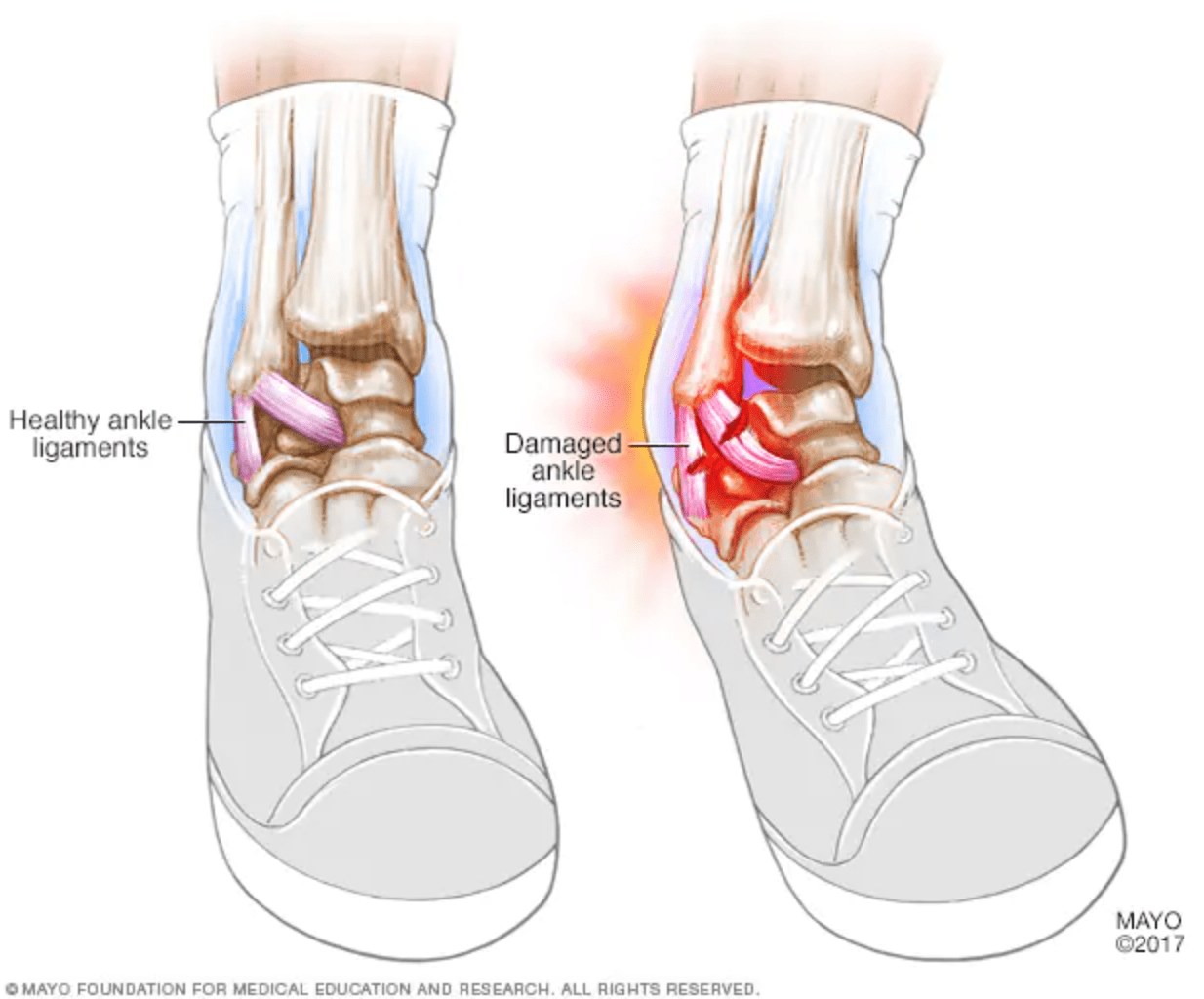Summertime in Ontario calls for hiking, playing sports, and weekends at the cottage. ☀️ With these activities, there is increased risk of a spraining an ankle. If you have found yourself with a recent ankle sprain (in the last week), try these basic exercises to relieve your pain. If you find your symptoms are not subsiding, contact our front desk to book an appointment with a chiropractor, physiotherapist, or athletic therapist!
What did I do to my ankle?
Ankle sprain = Stretching or tearing of a ligament in the ankle after an excessive load. Sprain severity varies with the mechanism of injury (ie. twisting) and is based on ligament damage. The most common mechanism is rolling your ankle. Ouch!
Another form of ankle sprains are high ankle sprains or syndesmosis sprains. These are less typical and usually occur in competitive athletes.

Source: Mayo Clinic. Anterior talofibular ligament is the most commonly involved ligament.
Ankle sprains are graded by severity:
Grade I (Mild): Ligament is stretched slightly or there is a very small tear. Your ankle has minor swelling and it's tender to touch.
Grade II (Moderate): Ligament is torn but the tear is incomplete. Your ankle has swelling over the injury and it hurts to move.
Grade III (Severe): Ligament is completely torn. Your ankle has significant swelling, the injury is painful and walking is difficult.
Ice, Compression, Elevation
Exercise is often combined with ice, compression, and elevation in treating a sprained ankle. These supports may provide short-term relief that allows one to tolerate more weight-bearing and loading during exercise. Exercise is the most important part of recovery and preventing further injury!
Do I need a brace?
If you are wondering about external supports, the use of an ankle brace is better supported in evidence than tape or immobilisation. It's generally up to the individual and what makes you feel stable.
Exercising with an Ankle Sprain
Exercise therapy significantly improves self-reported function. Generally, rest for 72 hours, then gradually return to activity as tolerated. Begin with range of motion exercises, then as swelling and pain decreases, progress to strengthening and balance exercises to prevent chronic ankle instability.
Exercise Progressions
🦶 WEEKS ONE - TWO: Range of Motion- 1. Ankle Alphabet
- 2. Gentle Calf Stretch
🦶🏽 WEEKS THREE - FOUR: Proprioception, Strength
- 1. Weight shifts side-side and front-back
- 2. Calf raises
🦶🏼 WEEKS FIVE - SIX: Challenge stability + strength
- 1. Toe Walking
- 2. Single Leg Balance - progress to eyes closed OR on an uneven surface
If you feel an increase in pain or symptoms that lasts for 30 minutes after exercise, do less repetitions and/or lower the frequency of exercises. If the pain continues, stop exercise and contact a Doctor or your physiotherapist/chiropractor.
*This blog post is not medical advice, it is best to speak to your Doctor or one of our practitioners.



























